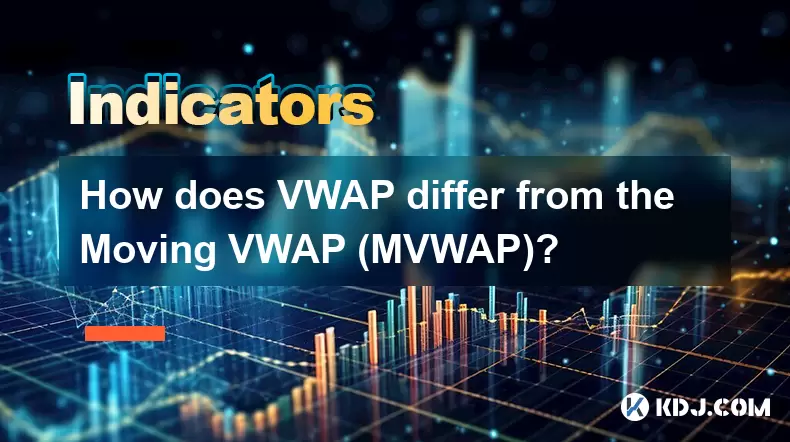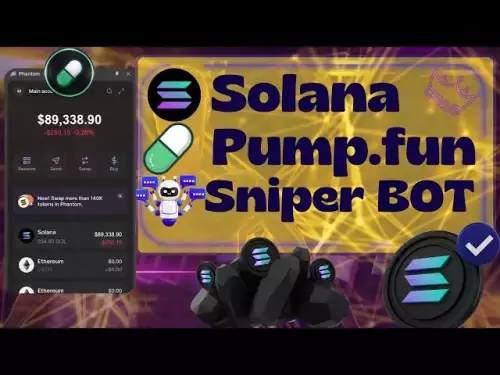-
 Bitcoin
Bitcoin $115100
-1.30% -
 Ethereum
Ethereum $4758
-1.70% -
 XRP
XRP $3.027
-2.19% -
 Tether USDt
Tether USDt $0.9998
-0.01% -
 BNB
BNB $883.2
-1.42% -
 Solana
Solana $204.0
2.62% -
 USDC
USDC $1.000
0.02% -
 Dogecoin
Dogecoin $0.2371
-0.97% -
 TRON
TRON $0.3612
-1.24% -
 Cardano
Cardano $0.9128
-2.19% -
 Chainlink
Chainlink $26.13
-3.93% -
 Hyperliquid
Hyperliquid $44.73
0.90% -
 Sui
Sui $3.715
-0.56% -
 Stellar
Stellar $0.4153
-2.41% -
 Ethena USDe
Ethena USDe $1.000
-0.04% -
 Bitcoin Cash
Bitcoin Cash $588.9
-2.06% -
 Avalanche
Avalanche $25.91
3.27% -
 Hedera
Hedera $0.2525
-1.45% -
 Litecoin
Litecoin $120.9
-1.35% -
 UNUS SED LEO
UNUS SED LEO $9.607
0.30% -
 Toncoin
Toncoin $3.382
-0.31% -
 Shiba Inu
Shiba Inu $0.00001329
-0.38% -
 Uniswap
Uniswap $11.38
-1.67% -
 Polkadot
Polkadot $4.222
2.83% -
 Aave
Aave $354.5
4.93% -
 Dai
Dai $0.0000
0.00% -
 Bitget Token
Bitget Token $4.704
-1.49% -
 Cronos
Cronos $0.1565
1.83% -
 Ethena
Ethena $0.7463
1.55% -
 Monero
Monero $265.8
-0.39%
How does VWAP differ from the Moving VWAP (MVWAP)?
VWAP and MVWAP are essential volume-weighted tools—VWAP for intraday trading, MVWAP for multi-day trends—helping traders gauge fair price and market sentiment.
Aug 13, 2025 at 11:35 am

Understanding VWAP: The Volume-Weighted Average Price
The Volume-Weighted Average Price (VWAP) is a crucial benchmark in cryptocurrency and traditional financial markets, used primarily to determine the average price a digital asset has traded at throughout a specific time period, weighted by volume. Unlike a simple average, VWAP accounts for both price and trading volume, making it a more accurate reflection of true market value over time. It is calculated using the formula:
VWAP = (Cumulative (Price × Volume)) / Cumulative Volume
This calculation begins at the start of a trading session—commonly the beginning of a day—and resets each day. Traders and algorithms use VWAP as a real-time benchmark to assess whether they are buying or selling at favorable prices relative to the market’s average. When the current price is above VWAP, it may indicate bullish sentiment; when below, bearish sentiment.
Role of VWAP in Crypto Trading Strategies
In the cryptocurrency market, where volatility is high and liquidity varies across exchanges, VWAP serves as a reliable execution metric. Institutional traders and high-frequency trading bots often use VWAP to execute large orders without significantly impacting the market price. By breaking large orders into smaller chunks and executing them when the price is near or below VWAP, traders aim to achieve better average entry or exit points.
Moreover, VWAP acts as a dynamic support or resistance level. Many trading platforms display VWAP as a plotted line on price charts, allowing traders to visually compare current price action against the volume-weighted average. When price consistently trades above VWAP, it suggests strength, whereas sustained trading below may signal weakness. This makes VWAP a key tool in intraday trading strategies, especially on timeframes like 1-hour or 4-hour charts.
Introduction to Moving VWAP (MVWAP)
While VWAP resets daily, the Moving VWAP (MVWAP) extends this concept by applying a moving window to the VWAP calculation. Instead of starting fresh each day, MVWAP computes VWAP over a rolling period, such as the last 20 periods on a 1-hour chart, effectively creating a continuously updated average that does not reset. This allows traders to analyze longer-term volume-weighted trends without the daily reset limitation.
The MVWAP formula is similar to VWAP, but instead of using data from the start of the day, it uses data from the most recent n periods. For example, on a 4-hour chart with a 14-period MVWAP, the indicator calculates the volume-weighted average price over the last 14 candles (56 hours). This makes MVWAP more suitable for swing traders and longer-term position traders who need a volume-sensitive average that persists across multiple days.
Key Differences in Calculation and Application
The primary distinction between VWAP and MVWAP lies in their calculation scope and reset behavior.
- VWAP accumulates data from a fixed starting point, typically market open, and recalculates cumulatively throughout the session.
- MVWAP uses a sliding window, dropping the oldest period and adding the newest, functioning like a moving average but volume-weighted.
This structural difference leads to divergent applications:
- VWAP is ideal for intraday execution and benchmarking, especially for traders aiming to match or beat the day’s average price.
- MVWAP is better suited for identifying multi-day trends and dynamic support/resistance zones, as it reflects volume-weighted price action over a consistent lookback period.
Additionally, VWAP is less responsive to sudden volume spikes outside the current session, while MVWAP can be tuned to react more quickly by adjusting the lookback period. A shorter MVWAP (e.g., 7 periods) will follow price more closely, while a longer one (e.g., 50 periods) will act as a smoother, slower-moving average.
Practical Implementation on Trading Platforms
To use VWAP and MVWAP effectively, traders must know how to set them up on popular platforms like TradingView, Binance, or MetaTrader.
For VWAP:
- Open your charting platform.
- Navigate to the "Indicators" section.
- Search for "VWAP" and apply it to the chart.
- The default setting will plot VWAP from the start of the session.
- Adjust session settings if needed (e.g., UTC vs. exchange local time).
For MVWAP:
- Not all platforms have MVWAP built-in.
- On TradingView, search for "Moving VWAP" or "Rolling VWAP" in the public script library.
- Alternatively, create a custom Pine Script:
- Define a lookback period (e.g., 20).
- Use the
sum(price * volume, length)/sum(volume, length)formula. - Plot the result as a line.
- Apply the script and verify it updates correctly with each new candle.
Ensure the timeframe alignment is correct. Using MVWAP on a 15-minute chart with a 48-period lookback gives a two-day volume-weighted average, which can help identify medium-term equilibrium prices.
Behavioral Differences During Market Events
During high-impact events such as major crypto exchange outages, regulatory news, or large whale transactions, VWAP and MVWAP respond differently.
- VWAP may show sharp deviations if a large volume trade occurs late in the session, as it includes all day’s data cumulatively. A sudden spike in volume at a high price can pull VWAP upward, even if price later reverts.
- MVWAP, due to its rolling nature, can revert faster if the lookback period excludes the outlier candle after it rolls out. This makes MVWAP more adaptive in volatile conditions.
For instance, if a $50 million BTC buy order executes at a 5% premium on Binance:
- VWAP will remain elevated for the rest of the day, influencing execution strategies.
- MVWAP will normalize once the high-volume candle exits the lookback window, potentially within hours depending on the period setting.
This responsiveness makes MVWAP preferable for traders managing positions across multiple sessions, while VWAP remains critical for day traders assessing execution quality.
Frequently Asked Questions
Can I use MVWAP on spot cryptocurrency markets, or is it limited to futures?
Yes, MVWAP can be applied to any market with volume data, including spot cryptocurrency pairs like BTC/USDT or ETH/BTC. The key requirement is reliable volume reporting, which major exchanges like Binance, Coinbase, and Kraken provide. Ensure the charting tool sources volume accurately from the selected exchange.
Is VWAP reliable on low-volume altcoins?
VWAP can be misleading on low-volume altcoins due to sparse or uneven trading activity. Thin volume means a single large trade can drastically skew the average. Traders should combine VWAP with other indicators like order book depth or volume profile to confirm signals, especially on smaller-cap tokens.
How do I choose the right lookback period for MVWAP?
The optimal MVWAP period depends on your trading style. For swing trading, 20 to 50 periods on a 4-hour chart (covering 3–8 days) is common. For scalping, try 10 to 20 periods on a 15-minute chart. Test different settings in backtesting to see which aligns with historical support/resistance levels.
Does VWAP work the same across different exchanges?
No, VWAP is exchange-specific because volume and price data differ between platforms. Binance’s VWAP for BTC/USDT will differ from Kraken’s due to varying trade flows and liquidity. Always use VWAP data from the exchange where you plan to execute trades.
Disclaimer:info@kdj.com
The information provided is not trading advice. kdj.com does not assume any responsibility for any investments made based on the information provided in this article. Cryptocurrencies are highly volatile and it is highly recommended that you invest with caution after thorough research!
If you believe that the content used on this website infringes your copyright, please contact us immediately (info@kdj.com) and we will delete it promptly.
- XYZVerse, Shiba Inu, and the 2025 Bull Cycle: A Meme Coin Evolution
- 2025-08-24 13:05:12
- WLFI Token, BingX, and the Trading Landscape: A New York Perspective
- 2025-08-24 12:45:20
- Aave, Governance, Allocation: Navigating DeFi's Shifting Sands
- 2025-08-24 12:45:20
- Crypto Coins in 2025: Meme Coins, Undervalued Blockchains, and Bull Run Predictions
- 2025-08-24 13:05:12
- Fed Pivot Ignites Crypto Rally: Altcoins Set to Outperform?
- 2025-08-24 13:25:12
- Eric Trump, Tokyo, and Metaplanet: A Bitcoin Bonanza?
- 2025-08-24 11:05:13
Related knowledge

What does it mean when the +DI and -DI cross frequently in the DMI indicator but the ADX is flattening?
Aug 11,2025 at 03:15am
Understanding the DMI Indicator ComponentsThe Directional Movement Index (DMI) is a technical analysis tool composed of three lines: the +DI (Positive...

What does the sudden appearance of a "dark cloud cover" candlestick pattern during an uptrend indicate?
Aug 13,2025 at 11:35am
Understanding the 'Dark Cloud Cover' Candlestick PatternThe dark cloud cover is a bearish reversal pattern in technical analysis that typically appear...

What does it mean when the moving average, MACD, and RSI all send buy signals simultaneously?
Aug 11,2025 at 01:42pm
Understanding the Convergence of Technical IndicatorsWhen the moving average, MACD, and RSI all generate buy signals at the same time, traders interpr...

What does it mean when both the KDJ indicator and the RSI show overbought signals simultaneously?
Aug 13,2025 at 11:35am
Understanding the KDJ Indicator in Cryptocurrency TradingThe KDJ indicator is a momentum oscillator derived from the Stochastic Oscillator, widely use...

What does it mean when the price is trading above the SAR indicator but the red dots are densely packed?
Aug 09,2025 at 11:49pm
Understanding the SAR Indicator and Its Visual SignalsThe SAR (Parabolic Stop and Reverse) indicator is a technical analysis tool used primarily to de...

What does it mean when the candlestick chart forms a "Morning Star" but trading volume is sluggish?
Aug 12,2025 at 06:28pm
Understanding the Morning Star Candlestick PatternThe Morning Star is a three-candle bullish reversal pattern commonly observed in cryptocurrency pric...

What does it mean when the +DI and -DI cross frequently in the DMI indicator but the ADX is flattening?
Aug 11,2025 at 03:15am
Understanding the DMI Indicator ComponentsThe Directional Movement Index (DMI) is a technical analysis tool composed of three lines: the +DI (Positive...

What does the sudden appearance of a "dark cloud cover" candlestick pattern during an uptrend indicate?
Aug 13,2025 at 11:35am
Understanding the 'Dark Cloud Cover' Candlestick PatternThe dark cloud cover is a bearish reversal pattern in technical analysis that typically appear...

What does it mean when the moving average, MACD, and RSI all send buy signals simultaneously?
Aug 11,2025 at 01:42pm
Understanding the Convergence of Technical IndicatorsWhen the moving average, MACD, and RSI all generate buy signals at the same time, traders interpr...

What does it mean when both the KDJ indicator and the RSI show overbought signals simultaneously?
Aug 13,2025 at 11:35am
Understanding the KDJ Indicator in Cryptocurrency TradingThe KDJ indicator is a momentum oscillator derived from the Stochastic Oscillator, widely use...

What does it mean when the price is trading above the SAR indicator but the red dots are densely packed?
Aug 09,2025 at 11:49pm
Understanding the SAR Indicator and Its Visual SignalsThe SAR (Parabolic Stop and Reverse) indicator is a technical analysis tool used primarily to de...

What does it mean when the candlestick chart forms a "Morning Star" but trading volume is sluggish?
Aug 12,2025 at 06:28pm
Understanding the Morning Star Candlestick PatternThe Morning Star is a three-candle bullish reversal pattern commonly observed in cryptocurrency pric...
See all articles

























































































